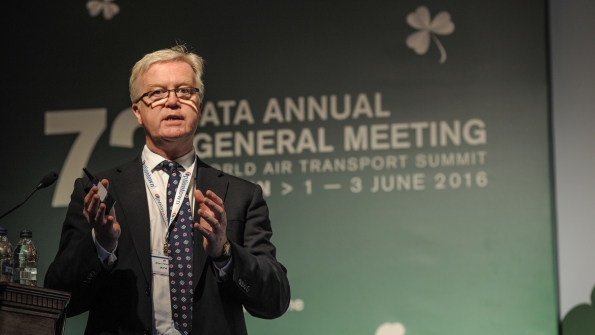 Chief Financial Officers (CFOs) and heads of cargo expressed more optimism about the airline industry’s 2017 profits outlook this January versus three months ago, according to the latest business confidence survey of the International Air Transport Association (IATA).
Chief Financial Officers (CFOs) and heads of cargo expressed more optimism about the airline industry’s 2017 profits outlook this January versus three months ago, according to the latest business confidence survey of the International Air Transport Association (IATA).
Profitability was unchanged in the last quarter of 2016 compared to the same period in 2015. As was the case in the previous quarter’s survey, responses were evenly balanced, with 39% of respondents reporting an increase in profits and 39% reporting a decrease.
Indeed, the latest survey reflect an operating environment that has become more challenging since mid-2016, with fuel prices trending higher but yields continuing to trend downwards.
The weighted-average score for profitability over the next 12 months increased again in the January survey, taking it to a six-quarter high.
The majority, or 42 percent, of respondents expect profits to increase over the next 12 months – the first time this has been the case since the April, 2016 survey.
Still, this proportion is some way below the 60-70% level that was the norm a few years ago, and momentum in the profitability cycle has weakened.
The responses on the demand side were broadly consistent with the trend pick-up in passenger volumes towards the end of last year, as well as the stronger-than-expected 2016 peak season for air freight.
Nevertheless, participants in the IATA survey remain very positive about the demand outlook for passengers and cargo in 2017.
Given the recent pick-up in the economic cycle, the majority, or 74%, of respondents expect passenger volumes to increase over the next 12 months – the highest proportion since October, 2013.
All told, the forward-looking weighted-average score remained stable at a high level, broadly in line with its five-year average.
In keeping with signs of a strong 2016 peak season for air freight, 52% of respondents reported an annual increase in cargo volumes in the final quarter of last year.
The wider global trade backdrop remains weak, but the weighted-average score for volumes over the next 12 months increased again in the January survey.
Already, 31% of respondents reported an annual increase in operating costs in the fourth quarter of 2016, the highest proportion since July, 2014.
With a rebalancing in the oil market slowly taking place, and some signs of emerging labor cost pressures, the forward-looking weighted-average score remained above the 50-mark for just the second time in the past 10 surveys, pointing to a further increase in input costs over the coming year.(E.V. Abadilla, mb)



